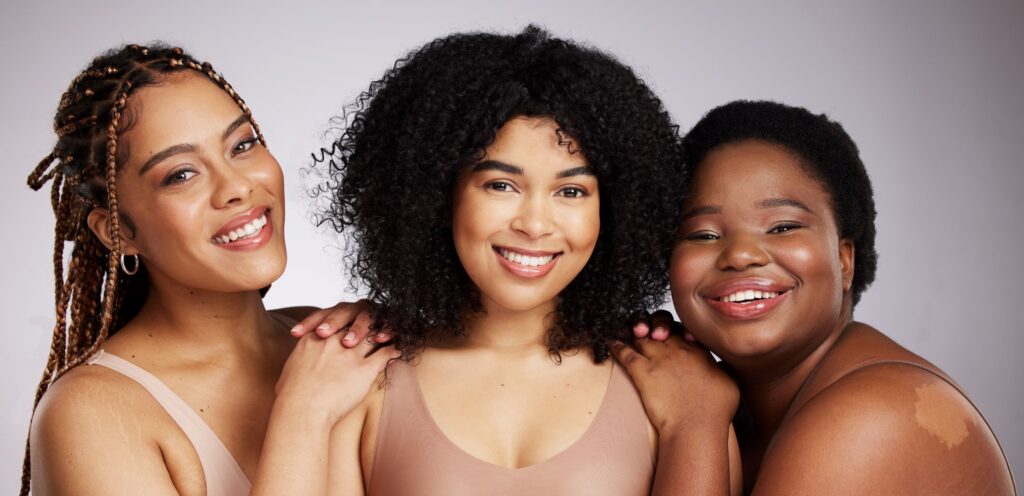Aug 15, 2025
Market
5 Retail Trends to Watch out for
Discover five retail trends shaping the future of fashion, from AI models to virtual fitting rooms, and learn how embracing them can keep your brand competitive and ahead of the curve.
We take a look at the major trends that are set to shape the future of the fashion industry.

The fashion industry has always been a playground for innovation and creativity. Never wanting to sit still, everyone involved in the industry has one eye on the future, from the designers and manufacturers to the retailers and advertisers.
In the coming years, new technology and changing customer trends and demands are set to transform the industry.
So, what does the future hold for the fashion industry? What are the future trends that we’ll be seeing in the next few years?
BLANC takes a look at the 6 major trends that no fashion brand or retailer will be able to avoid…
Digital transformation is affecting every industry, and brands will have to adjust how they create and sell clothing, beauty and home products to succeed in the new digital world.
For example, more and more consumers prefer to shop online, even if it means not being able to try an item on in person. Fashion brands that want to succeed in the future will need to offer immersive digital shopping experiences with tools such as virtual size recommendations, virtual showrooms and virtual stylists. Fashion brands will also need to take advantage of AI and VR to allow consumers to “try on” items digitally without having to leave the house.
In the B2B fashion world, virtual trade shows have become a fantastic new way for buyers and brands to discover each other from the comfort of their homes. Born out of the pandemic and travel restrictions, the appeal of virtual trade shows hasn’t died down and only seems to be on the rise.
The use of wholesale platforms is also a complement to the art and creative energy that goes into this industry. They help to build a more collaborative commerce for both brands and retailers. Don’t forget that the digital platforms are available 24 hours, 7 days a week and can be accessed anywhere in the world.
Read more: 7 good reasons to exhibit at a virtual trade show
These days, sustainability is a huge trend in our society. Consumers are expecting brands and companies to prove how they are lowering their carbon footprint and contributing to climate neutrality.
So, instead of always buying or manufacturing new clothes, more and more retailers, brands and consumers are turning to alternatives. The second-hand clothing market has been growing for many years now. More and more brands and retailers (such as The North Face, Zalando and H&M) are trying out new resale business models and selling second-hand products in addition to their regular clothing collections.
Fashion rental services are also having a huge moment, as people become tired of buying outfits that they’ll likely only wear once. Consumers are still wanting to dress to impress, but not break the bank whilst doing so! Rental services are making designer shopping more affordable, as well as more sustainable.
In a time where diversity, equality, and inclusion has become a huge focus area for large companies in various industries, the fashion world has struggled to catch up.
It’s fair to say that the fashion world hasn’t exactly led the way when it comes to diversity and inclusion. For a long time it was common to see only a specific type of body shape and skin colour on catwalks and in fashion magazines.
However, the situation is slowly improving as society’s attitudes towards issues like gender, race and body image change.

For example, more and more brands are now producing collections with a more inclusive range of sizes. We are also seeing a much more diverse cast of models hit the catwalks and magazine covers, including more models from ethnic minorities and models with disabilities.
Looking towards the future, fashion brands may want to focus less on creating clothes for specific categories and instead offer more gender-fluid clothing collections. Interest in gender-fluid fashion is being driven by younger generations, particularly Gen-Z consumers. Around half of Gen-Z globally have purchased a fashion product outside of their gender identity. Brands will therefore need to rethink their product design, marketing and customer experience to offer greater gender fluidity.
The fashion industry is well-known for being hugely wasteful, producing approximately 40 million tonnes of textile waste each year.
Many brands are making attempts at becoming more sustainable. However, with consumers nowadays becoming increasingly wary of ‘greenwashing’, successful fashion brands will need to prove they are taking meaningful action to clean up the industry.
One way that many brands are doing this is by exploring slow, sustainable and circular manufacturing processes and materials. For example, brands such as Stella McCartney have pioneered closed-loop solutions using innovative materials such as bio-based fur, which requires up to 30% less energy to produce and causes 63% less greenhouse gas than conventional synthetics. Similarly, leather alternatives such as muskin are helping to reduce the use of environmentally-damaging chemicals during production.
Many of the brands featured on BLANC are committed to using environmentally-friendly materials and processes. For example, Andreza Chagas is a Brazilian jeanswear brand whose manufacturing process uses only half of the water compared to other traditional processes. For every piece purchased, Serpentina plants a tree in a deforested area in Brazil.
Today, many consumers are turning to social media for guidance on what to wear. According to Business of Fashion (BOF) and McKinsey, 74% of people now are more influenced to shop through these channels than they were before the pandemic.
Social media has become much more than a place to simply advertise clothing brands. Customers these days want the option to buy the products they’re seeing within a click or two. In fact, according to Shopify, 6 out of 10 shoppers say that the ability to shop via mobile phone is “an important factor” in deciding from which brands to purchase. Therefore, these days it’s vital for brands to integrate social media into their ecommerce strategy. Given that social media increases website traffic, brands should make sure their website is adapted to mobile phone use.
Social media can also bring fun and exciting ways for brands to connect with potential customers. One of these is ‘live commerce’ sales, which are becoming increasingly popular. This is where brands sell directly to customers through live events streamed on social media, often using popular social media influencers to show off the products.
These days, consumers are demanding fast delivery times. Brands that want to thrive will need to work out how they can be more agile in order to meet this demand. In the future, we could be seeing changes to the fashion industry’s supply chain models.
In order to offer the agility that fashion businesses and customers want, the manufacturing sectors are exploring new, digitally-enabled supply chain models. According to McKinsey, 65% of businesses are looking at nearshoring, where manufacturers relocate operations to countries closer to the brands and business they serve. This reduces the logistics times, cost and delays.
However, 20% of businesses are looking to reduce the number of partners involved in the production process by taking on parts of the process that would have been outsourced to a third party. For example, US textile manufacturer Mount Vernon Mills purchased a yarn spinning and weaving facility from Wade Manufacturing Company to exercise greater control over its production. This strategy allows manufacturers to streamline their operations, helping to cut costs, improve margins and reduce delays.
These trends will shape the future of fashion, but why not invest in your brand’s future today?
A digital B2B platform such as BLANC could be just what your brand needs. Our digital wholesale platform is a powerful sales tool with cutting-edge features to wow your buyers and get your products in the hands of customers all over the world.
Book a consultation with our team and embrace the digitalization trend that will make you sell better and sell more.